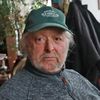The lighthouse of Suomenlinna
The Suomenlinna Church (Finnish: Suomenlinnan kirkko, Swedish: Sveaborgs kyrka) in Helsinki, Finland was built as an Eastern Orthodox garrison church for the Russian troops of Suomenlinna sea fortress in 1854, and originally had five onion domes. The church was designed by Konstantin Thon, an official architect of Imperial Russia during the reign of czar Nicholas I, and whose major works include the Cathedral of Christ the Saviour, the Grand Kremlin Palace, and the Kremlin Armoury in Moscow.
The fortress comprises five islands joined together by bridges, and the church is the central feature on the island of Iso Mustasaari surrounded on all sides by fortification works. Before the design and construction of the Orthodox church plans were drawn up in the 1820s by architect Carl Ludvig Engel for a church on the same site, but designed in the neoclassical style, in keeping with the rest of buildings in the fortress and the buildings of the capital, Helsinki. The Orthodox church was converted into an Evangelical Lutheran church during the 1920s. Its extensive iconography was warehoused by the city of Helsinki, but their current whereabouts are unknown. Today its central dome doubles as a lighthouse making it one of only a few churches in the world that double as a lighthouse. The signal blink is the Morse code for the letter "H" for Helsinki. It is a very popular wedding church and one of the first landmarks for people arriving in Helsinki by sea.
The church bell, the largest in Finland, was cast in Moscow in 1885 and weighs 6,683 kilos.[2] The perimeter fence, constructed from cannons and chains, was erected in the 1850s.[3]














ernst123 24/07/2018 0:07
Hi Raimo, nice picture! What about milky street in Finland?Regards Ernst
Holger Fuchs FTL 23/07/2018 22:52
Thank you for learning something about Finland with every picture from you!BR
Holger